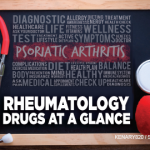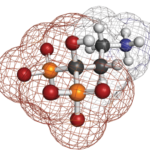What matters, ultimately, is not whether the boxed warning is literally correct, but rather whether one implements the safe practices called for in the remainder of the text.
It took nearly 40 years for us to adjust our concepts of the safety of csDMARDs. While adhering to reasonable precautions, time will tell if a similar story unfolds for biologics.
Evolution
How should we convey to patients that clinical trial safety data appear at odds with accumulated real-world evidence and clinical experience? As it does with disease management guidelines, the ACR could assist clinicians by developing valid talking points for rheumatologists and their advanced practice clinicians to strengthen their discussions with patients. Scripting an enlightened conversation of benefits and risks could promote a more balanced discourse, not only between providers and patients, but among payers, the medical-legal establishment and in direct-to-consumer advertising. As it stands, information from each of these elements of the public domain confounds the conversation between providers and patients. As therapeutic options expand, not least the biosimilars, a renovation in this discourse is needed.
In the meantime, we suggest the mechanics of a good discussion are not complex. With a patient facing a treatment choice, a shared decision-making process is recommended, and communication should be individualized to the patient’s needs and concerns.28-30 Clinicians should first underscore the need for the medication and the intended benefit. Providers, being well aware of risks, often neglect the opportunity to lead with the positive—the benefit. At the same time, patients often quickly divert the discussion to “What are the side effects?”
Rheumatologists can redirect by saying, “Ahead of that discussion, let’s first talk about what we gain in terms of disease control and remission.”
The risks of the disease itself should be front and center. Borrowing from our colleague Jack Cush, MD, “RA is the real 800 lb. gorilla in the room; medication side effects are only potential effects.” Whereas the disease poses real and present danger from clinical symptoms, joint damage, deformity, dysfunction, disability and systemic comorbidities, the probability of any particular side effect is relatively quite small. In accessible terms, Dr. Cush has also quipped that “It’s the engine that kills you, not the caboose.”31 He concludes that infection is more closely tied to disease activity and debility, making RA itself the prime risk factor for severe infections, that csDMARDs pose a minuscule risk and that biologics have a small, often insignificant, risk that only becomes meaningful in patients with the most disease activity and complications, and steroid use.
Providers might then characterize potential adverse events for patients in terms of tolerability or toxicity. Tolerability refers to the most common adverse effects seen in randomized, controlled trials, such as upper respiratory infections, nasopharyngitis, headache, nausea and abdominal pain. Although FDA warnings may be invoked when such events occur in a treatment arm in excess of the placebo arm, even by insignificant percentages, a small minority of patients on active agent actually experience them. Whether or not treatment is interrupted, these adverse effects invariably resolve.
Toxicity, on the other hand, refers to serious events, such as malignancies, organ damage and serious infection events (i.e., infections requiring hospitalization or intravenous antibiotics). An acceptable range of serious infection events in clinical trial data is 3.5%. Hearing the 96% odds that one will not experience a serious infection may help patients contextualize their absolute risk. Occurrences of malignancies and gastrointestinal perforations are much fewer than serious infections events. All of these events are more likely in patients with uncontrolled RA.
The much higher rate of morbidity associated with corticosteroids should be brought into the picture for some patients, particularly where it pertains to serious infection events.



